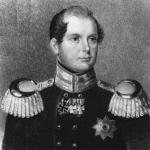Copenhagen Opera House (Operaen pa Holmen) photo
Copenhagen theater (Operaen pa Holmen) is one of the most expensive theater projects in the world, with over half a million US dollars spent on its construction. The opera house is located in the center of the Danish capital, opposite the Amalienborg Palace and the Marble Church, with which it forms a viewing axis. The Danish Parliament did not immediately approve the idea of construction, and this was due not only to the high cost of the project. The original architectural style did not impress the representatives of the Copenhagen “top”, so the first stone was laid only in 2001. The opening of the opera took place after four years. The famous Placido Domingo welcomed the new theater, appearing before the public in the image of Sigmund, the main character in Wagner's "Valkyrie".
The Copenhagen Opera House, built according to the design of Henning Larsen, is a 14-storey building with an area of about 40,000 square meters. The decoration of all its interiors was created using materials such as South German calcite, carat gold leaf and Sicilian marble. Most of the furniture is made of white maple wood, and the main auditorium with a capacity of 2000 people has an oak paneled floor. Black and orange tones dominate the color scheme of the scene. The lighting of the opera, which required a separate item of expenditure during construction, deserves special attention. All chandeliers in the theater are a work of art in their own right. They were created by Olafur Eliasson - an outstanding Danish-Icelandic artist.
One of the parts of the island "Holmen", on the territory of which the opera house is located, is called the Danish word "dokoen", which translates as "docks". It is their remains that can be seen on the western side of the building. The opera is managed by the Royal Danish Theater and rightfully belongs to the most equipped operas in the world. The tremendous work done by the acoustics in the process of creating the project ensured the perfect sound quality. In addition to the main stage, the opera also has a stage for the Takkelloftet Experimental Theatre. It is equipped with an individual hall, where the walls are decorated with the same limestone as the outer facade of the building.
Erected on a picturesque embankment in the center of Copenhagen, the opera impresses with its size, architecture and forms alone, so they visit this place not so much for a concert, but to admire the unique structure of our time with their own eyes. By the way, the top floor of the opera house is reserved for a wonderful restaurant, which provides an opportunity to enjoy both a meal and a fabulous view of Amalienborg.
While preparing for the trip, I had the idea to visit the Opera House. I adore opera, ballet and performances I love less. And I have never been to the theater abroad. So why not pass the winter evening at a cultural event. On the website of the Opera House, I looked at the repertoire for February http://kglteater.dk/Forestillinger/Kalender.aspx. And, curiously, the opera "Boris Godunov" was listed there! Our opera, and even in Russian! I want to see it! I was even seized with pride for the state! We bought tickets on the site, albeit with difficulty ...
We returned late from Köge, and it took us a long time to get ready. We were late to the theater by 20-30 minutes. I actually assumed that we would not be able to sit out for a long time, because. performed in Russian, it will be difficult to make out the words, and Svetlana immediately warned that she loves ballet more ... But what appeared before us was simply shocking!
The following decorations are placed on the stage: the doors of the Moscow metro, turned towards the audience with the inscriptions "There is no way out". An electronic scoreboard hangs on which it was written that it is now 2020. And in Russia again the tsar and the boyars !!! The main characters are dressed in modern clothes, and ordinary people are generally in some kind of rags, running around the stage with mattresses and deck chairs. I immediately recall the reviews of foreign tourists about Russians, that we supposedly take beach chairs to our room for the night. Apparently, then we take them to Russia ...
In general, the scenery is very scarce, practically does not change. They tried to modernize them: for example, a tavern on the Lithuanian border is a trailer with hot dogs...
And now about what I liked. I would note the performer of the role of Boris. He played well, good pronunciation. I was glad that the son of Boris was played by a boy, not a woman. He also tried very hard. And Xenia did an excellent job.
Above the stage were subtitles in Danish. As Svetlana said, it would be better if they let me in Russian. There was no intermission. The musicians from the orchestra pit alternately went out to rest. It's hard without intermission, it's good that we were late!
Well, and most importantly, after such a mockery of the production, of our story, it was even somehow uncomfortable. Still, modern productions must be done carefully and not distort the classics. I dread to imagine what the Danes have done with Swan Lake!
Here is some video from the rehearsal: http://video.kglteater.dk/video/932969/boris-godunov-operaen-2011
When I returned home, I watched a video of this opera in a Russian production. In fact, this is a very heavy, dramatic work ... In each aria there are bitter, heavy words: "Shed bitter tears, cry, Orthodox soul", "woe to Russia, cry ... Russian people, hungry people", "long-suffering Russia "," Russia is hungry, poor Russia is moaning "...
And now about the Opera Theatre. This modern building was built in 2005. It has a very unusual shape. Inside, like a giant pumpkin! And there are some very beautiful chandeliers! After the performance, all the audience quickly left the theater, and I took a picture!
Near the theater there is a bus stop, where a bus filled to capacity was waiting for us! Very comfortable, did not have to freeze! In addition to us, there were 2 companies of Russian tourists in the cabin. So I'm not the only one who came up with the idea to visit the Copenhagen Opera House....
The theater building was in August 2000 a gift to the state from the A.P. Møller and Chastine Mc-Kinney Møller Foundation; however, many politicians were then against this "gift" - since the cost of construction in that case was deducted from taxes, and, therefore, actually meant that the construction was paid for by the state. The project, however, was approved in the Parliament, and, having begun in 2001, the building was completed by October 2004.
On January 15, 2005, the grand opening of a new theatre, the Copenhagen Opera House, took place. The opening was attended by Prime Minister Anders Fogh Rasmussen and Queen Margrethe II. The famous tenor Plácido Domingo, who played the role of Sigmund in Wagner's Die Walküre, welcomed the new theater with his performance.
The theater is located on an island in the center of Copenhagen, opposite the Amalienborg Palace and The Marble Church.
The tetra building has 14 floors, 5 of which are located below ground level, the total area is 41 thousand square meters.
The number of seats in the auditorium in front of the main stage varies from 1492 to 1703, the orchestra pit is designed for 110 musicians. In the auditorium there is a parterre and three balconies, and, in addition to the main auditorium, the opera house also has one more hall - Takkelloftet, which can accommodate up to 180 spectators. By the way, Takkelloftet has its own lobby.
The building is equipped with a huge number of office space, and ""the total area of the underground floors of the theater is 12,000 square meters.
The theater building was designed by architect Henning Larsen in collaboration with Mærsk Mc-Kinney Møller. However, this cooperation was not always particularly pleasant - during the work several major disagreements were overcome - for example, there were especially many disputes on the topic of the material for the exterior of the building. However, over time, a consensus was nevertheless reached.
The foyer of the theater is decorated with Sicilian marble, and three beautiful chandeliers by Olafur Eliasson also attract attention here.
Most of the woodwork in the foyer and balconies is maple, while the floor in the main auditorium is oak. The ceilings were finished with 24 carat gold leaf.
The area in front of the theater building is paved with granite, it covers about 5500 square meters.
The Copenhagen Opera House is one of the richest opera houses in the world.






- Address: Ekvipagemestervej 10, 1438 København, Denmark
- Telephone: +45 33 69 69 69
- Opening: January 15, 2005
- Architect: Henning Larsen
- Checkout hours: 9.00 - 18.00
In the central part, near the palace, there is the National Opera House, which is part of. The state parliament rejected the theater construction project for a long time, but in 2001, after lengthy disputes, the building was nevertheless laid down.
The most expensive building in DenmarkThe eminent local architect Henning Larsen worked on the design of the Copenhagen Opera House. It took 3 years and more than 500 million dollars to implement Larsen's idea, which made the theater one of the most expensive buildings not only in, but throughout the world. The grand opening ceremony of the Opera House was held on January 15, 2005, with Queen Margrethe II and Prime Minister Anders Fogh Rasmussen as its main guests.
The grandiose work of the author, who designed the 14-story building in such a way that 5 of its floors are hidden under the ground, is amazing. The Opera House in has a huge size: its total area is 41 thousand square meters, the underground floors are located on an area of 12 thousand square meters. The interior of the theater impresses with splendor and luxury, theatrical chandeliers, which were created according to special sketches by the artist Olafur Eliasson, are especially noticeable. The halls of the Opera House are decorated with unique materials, including marble from Sicily, gold leaf, white maple, oak.
Large and Small Halls of the Opera House
The most memorable is the Great Hall of the theater, the stage of which combines black and orange colors. The hall is called the Big Hall for a reason, it can accommodate from 1492 to 1703 spectators, it all depends on the orchestra pit, which can accommodate up to 110 musicians. The hall is divided into zones: stalls and balconies. The Takkelloftet Small Hall can accommodate much fewer guests, no more than 180 people. A cozy cafe and a prestigious restaurant are located in the building of the Copenhagen Opera House.
Useful information for touristsThe box office of the Opera House in Copenhagen is open daily, except Sunday, from 09.00 to 18.00. The cost of the entrance ticket varies depending on the production. The cheapest ticket will cost you 95 DDK (Danish kroner).
You can get to the Opera House by buses following routes No. 66, 991, 992, 993, the desired stop is called "Operaen". In addition, there is also a water route. Near the theater building there is a small pier that accepts water trams. Well, and, as always, no one canceled a taxi that will take you from any part of the city directly to the entrance to the Copenhagen Opera House.
 |
Although Copenhagen is not such a big metropolis as Moscow or St. Petersburg, nevertheless this city never sleeps in terms of cultural events . Something is always happening in Copenhagen, so if you suddenly want to diversify your stay in the Danish capital with a cultural event, I suggest you visit one of the 4 most popular theatrical and entertainment places in the city:
1. New theater
(dat. Det Ny Teater
) is located in one of the central districts of Copenhagen - Vesterbro, 500 meters from the central railway station. The auditorium is designed for 1000 seats, and the area of the theater premises is more than 12 thousand m².
Address: Gammel Kongevej 29, 1610 Copenhagen V
Tel.
: +45 33 25 50 75
Internet address
: Children ny teater
Video about the theater
:
For the first time, the New Theater opened its doors to the public on September 19, 1908. At that time it was the second largest theater in the city. The theater building was designed by architects Ludwig Andersen and L.P. Gudme. First performance Pierre Bertons' comedy "The Beautiful Woman from Marseilles" starred famous Danish actors Asta Nielsen and Poul Reumert as the lead roles at the New Theatre. By 1990, the theater looked very, very shabby, and therefore was closed for restoration, which lasted until 1994.


Today, the New Theater is a place where some of the most colorful performances in Copenhagen. Choreography, staging, costumes, scenery worked out to the smallest detail and are distinguished by high professionalism and deep study. Among the many performances at the New Theater were Les Misérables, The Phantom of the Opera, Beauty and the Beast, Mary Popins, Chicago, Dancing in the Rain, Evita, Cats, The Merry Widow , "Jesus Christ Superstar" and many others. The numbers speak for themselves. For example, the musical "The Phantom of the Opera" was seen by more than 450 000 man, which became an absolute record in the history of the Danish theater. About 200,000 people attend the performances of the New Theater every year.


Practical information
The bar at the theater opens half an hour before the start of the performance. Drinks are recommended to be ordered in advance to avoid queuing during the intermission. There is a bar on the 1st floor, on the balcony and on the 2nd floor. In addition, there is a restaurant "Theatre cellar" open both during the intermission and after the performance.

Minimum age children to go to the New Theater for 7 years, but exceptions are possible if the child is younger, but, according to the parents, is able to sit quietly throughout the performance. For some performances, the minimum age for children may be higher. Smoking is prohibited on the theater grounds.
2. Danish Royal Theater
(dat. Det Kongelige Teater
) - the first national theater in Denmark, the largest in the country, was founded in the 18th century.
Address: August Bournonvilles Passage 8, Copenhagen
Tel.
: +45 33 69 69 33
Internet address
: Det Kongelige Teater
Video about the Royal Theater
:
In March 1720, with the support of the French engineer and wine merchant Etienne Capion (Dan. Etienne Capion), the Theater House was opened in Copenhagen (on Danish Kongens Nytorv Street). However, due to the fact that the performances were mainly in French and German, King Frederick IV of Denmark banned this activity. Then Capion agreed with the French actor and theater director Rene Montaigu (Dan. Rene Magnon de Montaigu) to create a stage where they could play in Danish.

Opening Danish scene (Dan. Lille Grønnegade, and later - Ny Adelgade) took place on September 23, 1722, and the first production was Molière's translated comedy The Miser, or the School of Lies. Holberg's comedies, ridiculing the nobility and the burghers, naturally caused fierce persecution from the ruling circles. In 1727 Capio went bankrupt , and in 1728 the theater was closed by order of King Christian VI, who was opposed to mass entertainment.

On November 11, 1747, the next monarch, Frederick V, issued a decree on the construction of a theater in Copenhagen on Royal Square. The architect was Nikolai Eigtved, who completed the construction in record time : the foundation stone was laid on July 4, 1748, and the opening took place on December 18 of the same year. Initially, the theater could accommodate up to 600 spectators, but soon turned out to be too small to accommodate everyone. In the end, constant restructuring led to the fact that the building not only looked unsightly and many of its functions were not practical, but also fell into disrepair.




At the same time, construction debris dumps and moisture attracted to the building hordes rats. Talks about a new theater building have been going on since 1857, but the first stone in the foundation of the new building was laid only on October 18, 1872, and the grand opening took place only on October 15, 1874. The new building contained only one stage, was designed for 1600 seats and had a special box for the monarch.
3. Opera theatre
Copenhagen (date. Operaen pa Holmen
) is operated by the Royal Theater of Denmark, and is one of the newest and most expensive opera houses in the world. The theater was designed by architect Herning Larsen (Dan. Henning Larsen) and opened for the first time on January 15, 2005. The construction of the Opera House cost more than 500 million US dollars or 2.3 billion
Danish kroner. The theater is located on the island of Holmen, in the center of Copenhagen, opposite Amalienborg Palace and the Marble Church.
Address: Ekvipagemestervej 10, Copenhagen
Tel.: +45 33 69 69 69
Internet address
: Opera House
Opera video
:
The theater building was donated to the state by the A.P. Møller, owner of the company A.P. Moller - Maersk Group . Some politicians were against private donations, since the entire cost of construction was deducted from taxes, which in fact meant that the state itself paid for the construction of the theater. However, the project was approved by Parliament and construction began in June 2001 and ended on October 1, 2004.


The total area of the opera house is approx. 41 thousand m². The building has 14 floors, five of which are underground. The height of the building is 54 meters. The area of the two stages and the foyer is 7000 m², and the area of underground premises is 12 thousand m². The hall in front of the Store Scene seats 1,500 spectators and has an orchestra pit that can accommodate up to 110 musicians. The auditorium is divided into stalls and three balconies. The building has a walking tier under the roof, which offers stunning views of Copenhagen.

Second auditorium Tuckelloftet (dat. Takkelloftet) can accommodate up to 180 spectators. There is a café and a restaurant in the lobby of the opera house. The theater has about a thousand utility rooms. The area in front of the opera is paved with granite and occupies an area 5500 m². South German calcite, Sicilian marble, white maple and 24 carat gold leaf were used to finish the building.





